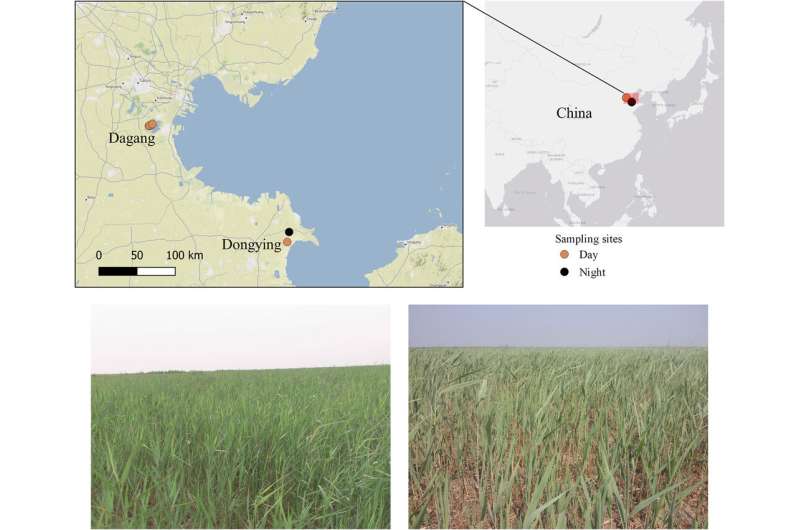This article has been reviewed according to Science X's editorial process and policies. Editors have highlighted the following attributes while ensuring the content's credibility:
fact-checked
peer-reviewed publication
proofread
Study reveals optimal time to apply eco-friendly biopesticides to tackle Oriental migratory locust pest

A new study led by scientists from the Chinese MARA-CABI Joint Laboratory for Biosafety has discovered the optimal time to apply safer-to-use and more environmentally-friendly biopesticides to fight the Oriental migratory locust pest.
Locusta migratoria manilensis is deemed to be one of the most dangerous pests threatening crop production and food security in China. Crops at risk include maize, rice and peanut. Pastures can also be seriously damaged.
While there have been no major outbreaks in recent years, there are still high-density populations of the Oriental migratory locust in the marshlands of Jilin, Shanxi and Shandong Provinces which threaten food production and the region's ecology.
Dr. Hongmei Li, lead author and Senior Scientist at CABI in China, together with fellow scientists including those from the National Agro-Tech Extension and Service Center, Beijing, Zhejiang University and the University of Cordoba, Spain, suggest that the body heat of the locusts is key to effectiveness of the biopesticides.

The researchers highlight that entomopathogenic fungi (EPF) are widely promoted to reduce the amount of more harmful pesticides used to tackle the Oriental migratory locusts but that they tend to work better on insects with lower body temperatures.
Dr. Hongmei Li and the scientists argue that biopesticides should be applied on younger locusts at dawn or dusk as they tend to show lower temperatures more suitable for EPF development—thereby minimizing the risk of a locust outbreak.
Dr. Hongmei Li said, "Current pest management techniques would benefit from understanding the behavioral rhythms of the target pest and its body temperature, a critical aspect not well studied and potentially limiting the effectiveness of biopesticides under natural conditions."
The study—published in Frontiers in Physiology—sought to understand the behavioral patterns of different stages of hoppers and adults of the Oriental migratory locust and the environmental factors that modulated their body temperatures through field observation.
Intensive field sampling in two of the main breeding regions in China was carried out. This included recording the day and night body temperatures of 953 locusts as well as their morphological traits (stage, sex and size) and microhabitat.
Dr. Hongmei Li added, "The results revealed that locusts preferred the ground as their main activity sub-habitat, particularly for hoppers.
"Adults tended to move upper in the reed canopy at two peaks—10am to 11am and 2pm to 3pm. Locusts body temperature during the daytime increased with development stage and size, while the opposite pattern occurred at night time.
"Entomopathogenic fungi are more effective if the body temperature of the target pest is in a proper range without being too high or too low.
"The application of biopesticides, therefore, should focus on younger locusts—spraying in the morning or at dusk when the locusts have lower body temperatures."
The scientists conclude by highlighting that the ground truth data of the pests that they have identified could in future also compliment advanced technologies used tackle crop pests. This includes earth observation and other agricultural-based applications.
More information: Hongmei Li et al, Daily activity patterns and body temperature of the Oriental migratory locust, Locusta migratoria manilensis (Meyen), in natural habitat, Frontiers in Physiology (2023). DOI: 10.3389/fphys.2023.1110998
Journal information: Frontiers in Physiology
Provided by CABI



















